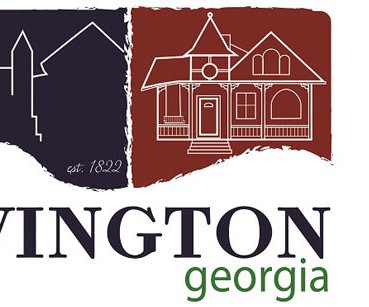OXFORD, Ga. — During a city council meeting Monday, Oxford College Dean Doug Hicks asked councilmembers to consider removing certain signage around the campus that have been flagged by students and community members as historically inaccurate.
The recommendations are a result of conversations held during Emory University’s Twin Memorial Project’s work sessions, which Hicks co-chaired along with Associate Professor of Pastoral Care and Counseling Gregory C. Ellison II.
The Twin Memorial Project seeks to honor the enslaved people who built the campus and address the university’s racist past. In the past couple months, the university has hosted over 10 conversations with current students, community members and descendents of enslaved peoples who worked at the university, with the goal of erecting two memorials on each campus.
“We’ve had wonderful ideas for what a memorial could look like,” Hicks said. “We’ve had some hard conversations, but a whole lot of hope and excitement of people coming together to do this work.”
Hicks mentioned three signs he would like the councilmembers to consider removing: the plaque at the Confederate cemetery on the campus, the plaque at Kitty’s Cottage and a plaque on Whatcoat Street. Hicks said he has had students in “both my office and in public forums” telling him about their negative experiences encountering these signs around campus and the discomfort such messaging has created.
Kitty’s Cottage is the former residence in the 1840s of Catherine “Kitty” Andrew Boyd, who was enslaved by Methodist Bishop James Osgood Andrew, the first chair of the university’s Board of Trustees. The plaque outside of the cottage, which was created only three decades ago, states that Andrew offered to send Boyd to Liberia but that Boyd “preferred to remain with the Andrew family rather than be sent to Africa.”
Students and Oxford community members have taken issue with the words on the plaque and said that it paints an inaccurate view of history.
“Those are hard words that don’t seem to reflect where our thinking is and where our understanding of history is,” Hicks said. “That she chose to be a slave, that she was a mulatto and that she was only technically a slave and that she was as free as the law and society would allow.
“We all know that the law and society at that time did not allow her to be free. So, she may well have been loved and a part of the community, but freedom is not a term we should use. Those are the kind of sentiments that my students share with me.”
Additionally, community members have taken issue with the plaque in the Confederate cemetery on Oxford’s campus, which refers to the Confederate soldiers buried there as “our soldiers.”
The sign on Whatcoat Street, which gives an overview of the college’s history, makes no mention of the enslaved peoples who built the campus buildings and reiterates the incomplete truth told on the plaque at Kitty’s Cottage.
“I wanted to come and share some of the things that we are doing at the college and ask that we might be partners in this work and invite citizens to stand with you all as leaders to remove signs that are relatively recent but are inaccurate, or at least not complete, in what they tell and then think together with you all in whatever ways you think are appropriate to partner with the college,” Hicks said.
Hicks called the councilmembers to reflect on the signage and the version of history it tells.
Councilman Jim Windham said that many on the council had “wanted to act this way a decade ago” but did not have the momentum or were encouraged not to act.
“The question is what can we do now, and I respectfully share this and … hopefully we can work together,” Hicks said.
Mayor David Eady thanked Hicks for sharing his perspective and said he has heard similar concerns from community members.
“I’ve definitely heard some of those [concerns] as well myself,” Eady said. “[I] was there in October to hear the powerful sharing of the students of what it’s like to come here and see some of these signs and the questions that they raised, the need for us to really reflect our history better and share some of those untold stories in the telling of our history.”





